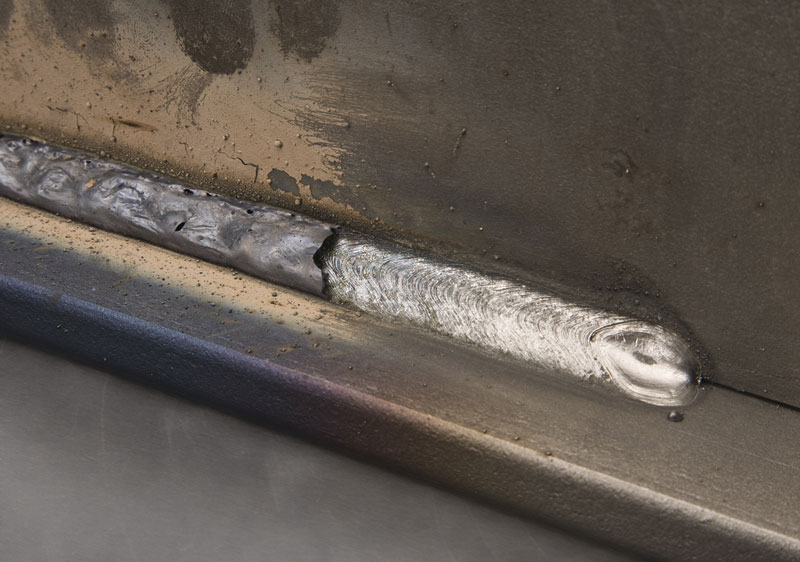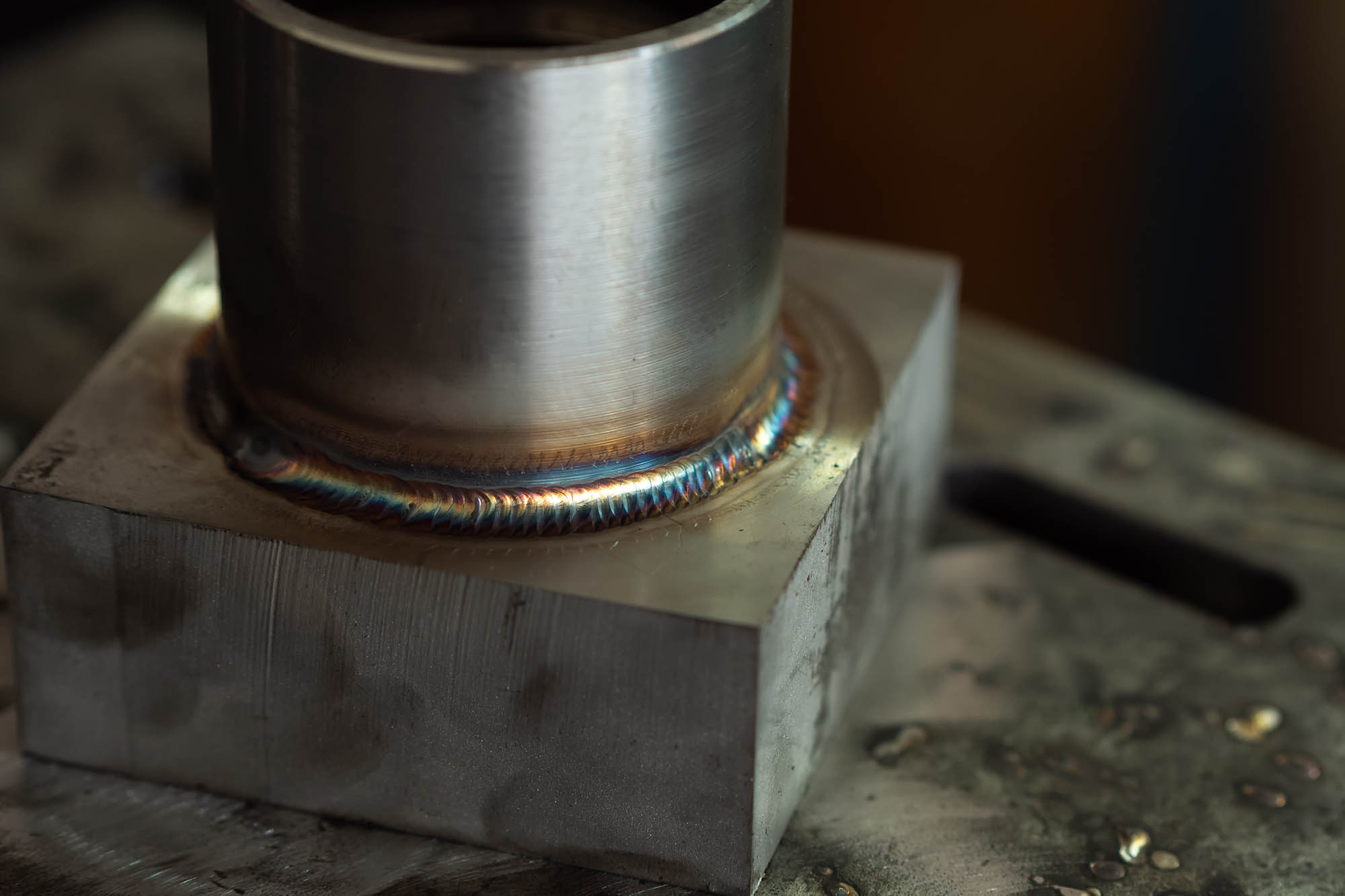Untangling the Secret of Porosity in Welding: Tips for Reducing Flaws and Optimizing Quality
In the intricate world of welding, porosity stays a relentless obstacle that can dramatically influence the quality and honesty of bonded joints. Comprehending the variables that add to porosity development is crucial in the quest of perfect welds. By untangling the enigma of porosity and applying reliable strategies for problem reduction, welders can boost the criteria of their job to achieve premium top quality end results. As we explore the depths of porosity in welding, uncovering the secrets to its prevention and control will certainly be vital for professionals seeking to master the art of top quality weldments.
Recognizing Porosity in Welding
Porosity in welding, an usual issue come across by welders, describes the existence of gas pockets or voids in the bonded product, which can jeopardize the stability and quality of the weld. These gas pockets are typically entraped during the welding process as a result of numerous elements such as incorrect protecting gas, contaminated base materials, or wrong welding specifications. The formation of porosity can damage the weld, making it prone to breaking and corrosion, inevitably resulting in structural failures.
Recognizing the origin of porosity is vital for welders to effectively avoid its occurrence. By identifying the importance of keeping appropriate gas shielding, making sure the cleanliness of base products, and optimizing welding setups, welders can considerably lower the chance of porosity formation. In addition, utilizing strategies like preheating the base product, utilizing proper welding methods, and performing extensive inspections post-welding can additionally assist in decreasing porosity issues. Generally, a detailed understanding of porosity in welding is important for welders to create high-quality and resilient welds.

Usual Sources Of Porosity
When checking welding procedures for possible top quality issues, understanding the common root causes of porosity is necessary for keeping weld integrity and avoiding structural failings. Porosity, characterized by the presence of cavities or gaps in the weld steel, can significantly jeopardize the mechanical homes of a bonded joint. One typical cause of porosity is incorrect protecting gas insurance coverage. Poor shielding gas flow prices or inappropriate gas combinations can lead to climatic contamination, causing porosity development.
One more prevalent source of porosity is the visibility of dampness and pollutants on the surface area of the base metal or filler product. When welding products are not effectively cleaned up or are subjected to high degrees of moisture, the evaporation of these impurities throughout welding can create spaces within the weld bead. Furthermore, welding at incorrect specifications, such as exceedingly high traveling speeds or currents, can produce excessive turbulence in the weld pool, capturing gases and causing porosity. By attending to these common reasons with appropriate hop over to here gas securing, material prep work, and adherence to ideal welding criteria, welders can decrease porosity and enhance the high quality of their welds.
Techniques for Porosity Avoidance
Executing effective safety nets is important in decreasing the incident of porosity in welding procedures. One technique for porosity avoidance is ensuring appropriate cleansing of the base metal prior to welding. Pollutants such as oil, grease, rust, and paint can lead to porosity, so thorough cleaning using ideal solvents or mechanical techniques is necessary.

Making use of high-quality filler products and shielding gases that are appropriate for the base steel and welding procedure can dramatically reduce the danger of porosity. In addition, keeping correct welding parameters, such as voltage, existing, travel speed, and gas circulation rate, is important for porosity prevention.
In addition, using correct welding techniques, such as keeping a regular travel speed, electrode angle, and arc length, can aid prevent porosity (What is Porosity). Appropriate training of welders to ensure they adhere to best practices and quality assurance treatments is also necessary in reducing porosity defects in welding

Best Practices for Top Quality Welds
One key technique is keeping appropriate sanitation in the welding area. Thoroughly cleaning click this site the workpiece and bordering area before welding can aid reduce these concerns.
One more best technique is to carefully choose the suitable welding parameters for the specific materials being signed up with. This includes establishing the proper voltage, current, take a trip rate, and shielding gas circulation rate. Proper criterion selection guarantees ideal weld infiltration, combination, and total quality. best site Furthermore, using premium welding consumables, such as electrodes and filler steels, can considerably influence the final weld top quality. Investing in premium consumables can cause more powerful, much more resilient welds with less flaws. By adhering to these finest techniques, welders can constantly create top quality welds that meet sector standards and go beyond consumer expectations.
Relevance of Porosity Control
Porosity control plays a crucial role in ensuring the integrity and top quality of welding joints. Porosity, defined by the existence of cavities or spaces within the weld metal, can substantially endanger the mechanical residential or commercial properties and structural stability of the weld. Extreme porosity deteriorates the weld, making it a lot more vulnerable to breaking, rust, and general failing under functional lots.
Effective porosity control is vital for preserving the preferred mechanical residential or commercial properties, such as strength, ductility, and strength, of the welded joint. What is Porosity. By lessening porosity, welders can boost the total high quality and integrity of the weld, guaranteeing that it meets the performance demands of the intended application
In addition, porosity control is crucial for accomplishing the desired visual appearance of the weld. Extreme porosity not just damages the weld but likewise diminishes its aesthetic allure, which can be critical in sectors where looks are very important. Proper porosity control techniques, such as using the appropriate protecting gas, regulating the welding specifications, and making sure correct sanitation of the base products, are crucial for producing top quality welds with minimal problems.

Verdict
To conclude, porosity in welding is a typical defect that can compromise the quality of the weld. By understanding the reasons for porosity and implementing proper prevention techniques, welders can lessen issues and achieve better welds. It is important to manage porosity in welding to make sure the stability and stamina of the final product. Executing ideal practices for porosity control is essential for accomplishing optimal welding results.